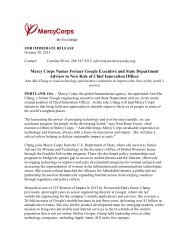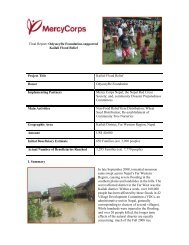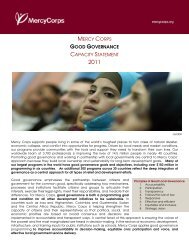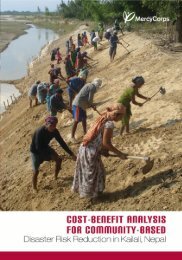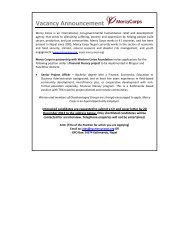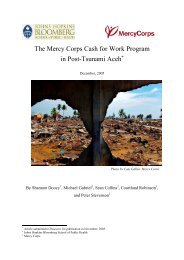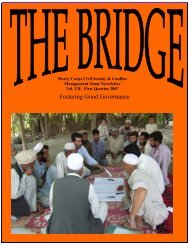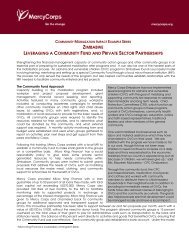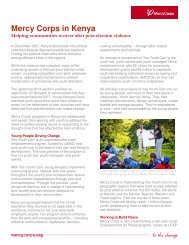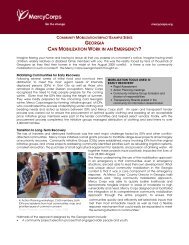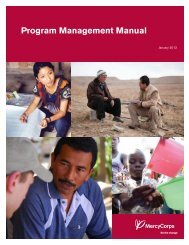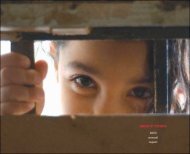SUSTAINABILITY FIELD STUDY - Mercy Corps
SUSTAINABILITY FIELD STUDY - Mercy Corps
SUSTAINABILITY FIELD STUDY - Mercy Corps
Create successful ePaper yourself
Turn your PDF publications into a flip-book with our unique Google optimized e-Paper software.
comparison of these results. Similarly, the methodology did not include a survey of communities notdirectly impacted by CAIP and PCI. Though such measurements would provide a point of reference forbetter understanding the results in program communities, there are few communities within the regionthat have not been touched by some level of NGO investment. It was therefore determined that acontrol group of non-CAIP and PCI communities would not provide an even base point against whichto measure the changes in CAIP and PCI communities. As a result, the study relies on the memoriesand reflections of the interviewees to understand changes that have occurred within communities.Finally, the study was led by <strong>Mercy</strong> <strong>Corps</strong>’ program director and funded through <strong>Mercy</strong> <strong>Corps</strong> privatewhich creates a potential bias. The above challenges clearly pose constraints and create potential biasto the research. However, the team triangulated enough information from the different stakeholders tohave confidence in the conclusions reported herein.V. SUSTAINED COMMUNITY INITIATIVESThe study sought evidence that communities or change agents within communities were continuingto take initiative to solve their own problems and care for public resources. Specifically, the studyteam examined whether projects implemented during CAIP and PCI continued to be valued, cared forand/or replicated following program closure. Also of interest were whether or not communities werepro-active in seeking solutions to additional priorities or problems, and the level of engagement byresidents in community actions.CAIP and PCI were initiated at a time when community infrastructure was in disarray. <strong>Mercy</strong> <strong>Corps</strong>’proposal for the CAIP program described the poor state of community facilities in the target regions ofCentral Asia:Local schools, health clinics, youth centers…, and drinking water and irrigation systems are often oldand dangerously run-down. Newer facilities often fall quickly into disrepair due to a lack of propermaintenance, and Soviet-era structures are crumbling after decades of neglect. Roofs and foundationsare starting to crumble and cannot be repaired due to a lack of funds. This is due, in part, to alack of a sense of responsibility for public property. 14Both programs attempted to address the issues of disrepair through community-identified infrastructureconstruction and improvement projects, while also aiming to improve community responsibilityfor public property through the mobilization process. While communities traditionally organized forcommunity work days to assist neighbors with home building or to clean canals, at the time CAIP andPCI were launched, communities continued to await government intervention to overcome the largerchallenges described above.“The water pump didn’t work for 30 years, now it is in good condition. People contributed to thepump repair and so they value and maintain it.”— Isroilov Salohuddin of Garibak community in Penjikent14 <strong>Mercy</strong> <strong>Corps</strong>. RFA No. 176-02-01 “Community Action Investment Program” (CAIP) Revised Application. March 2002. p.4.16Sustainability Field Study



